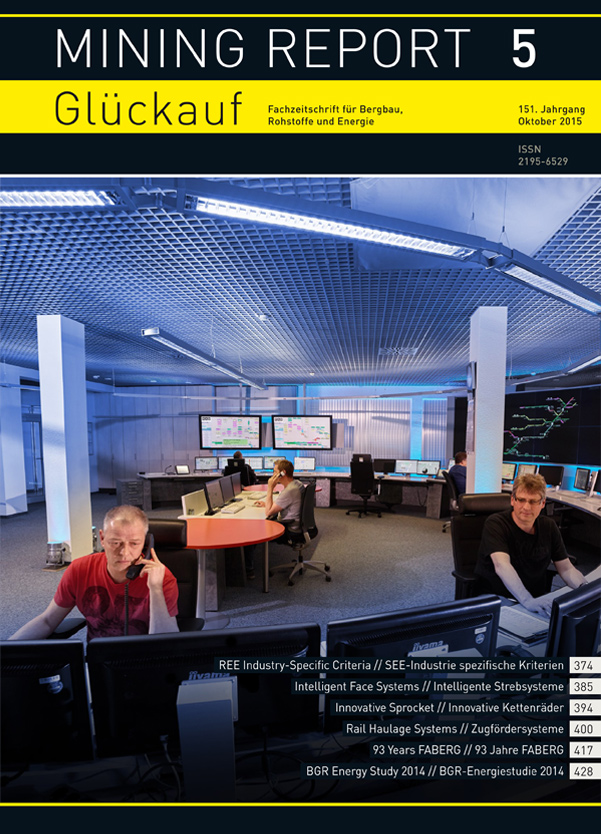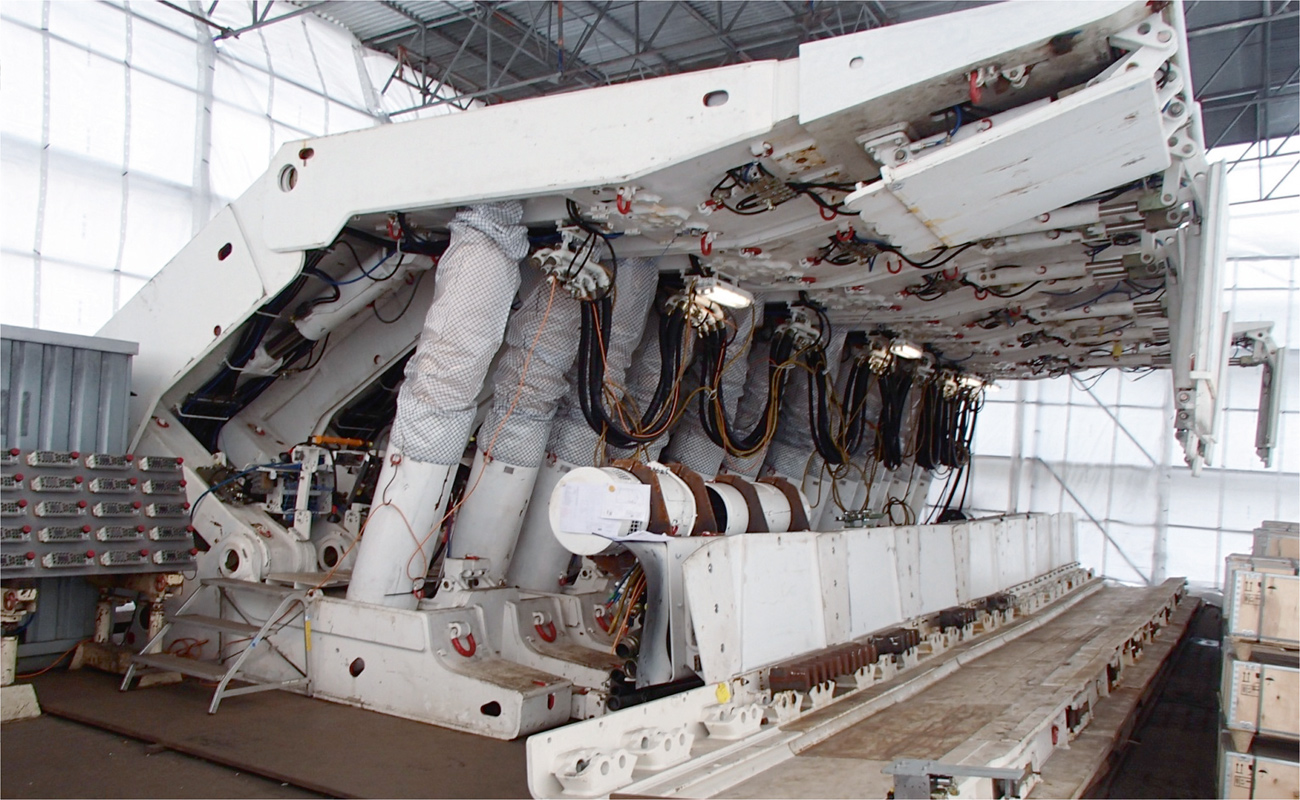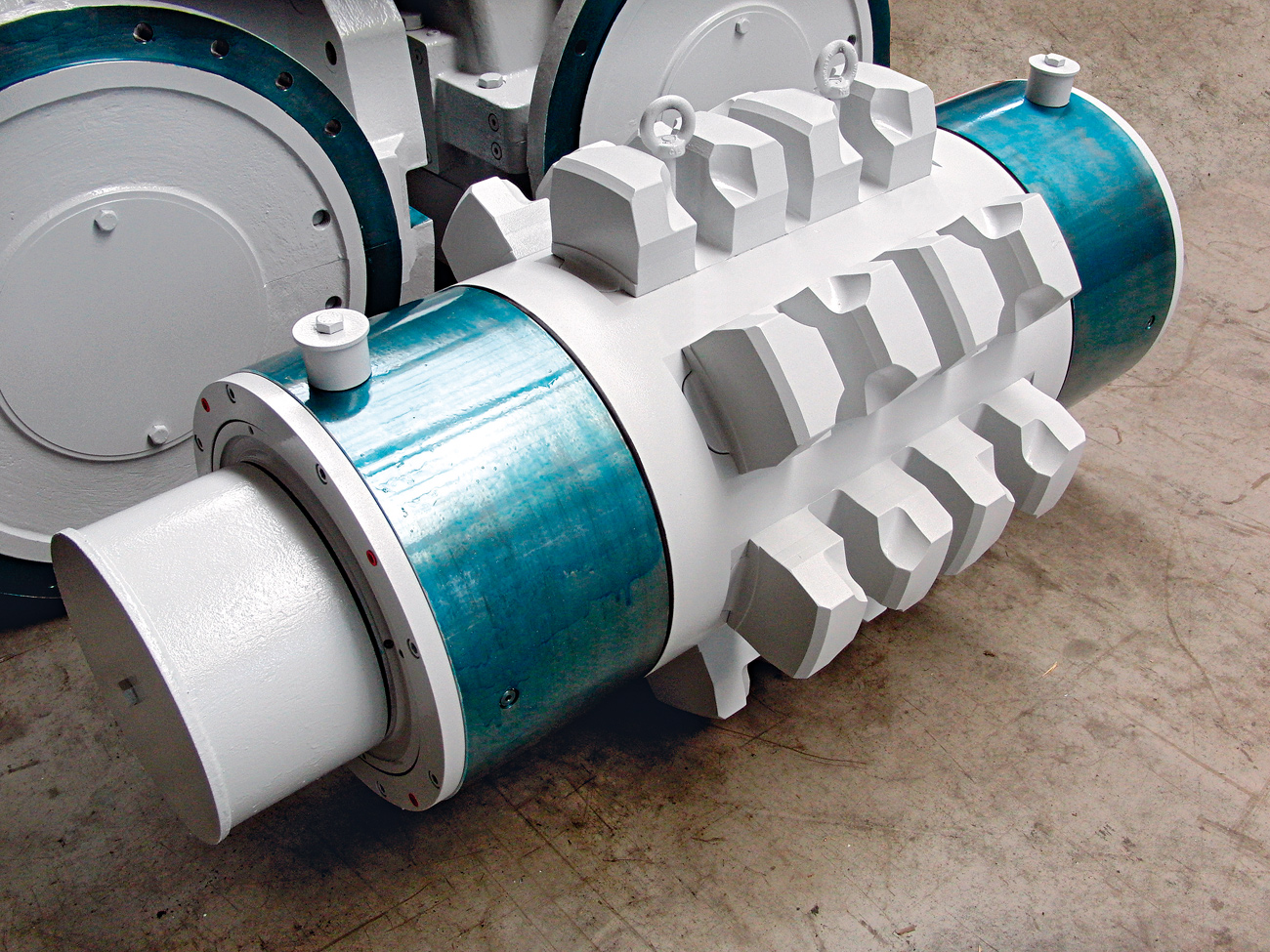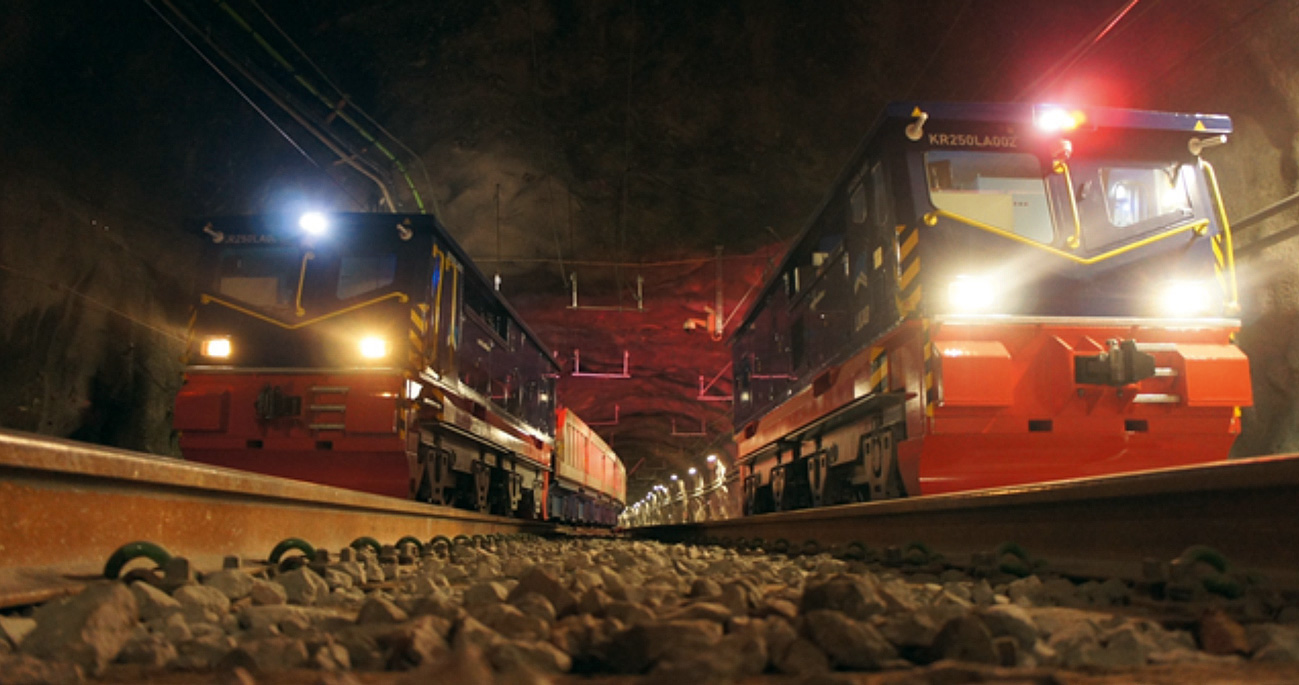
Occupational safety and process efficiency are key areas of activity for every sector, not just the mining industry. The paper under the heading of ISSA Mining illustrates that both these factors have to work hand in hand if economic success is to be achieved. Cross-linking coal face systems with a high level of automation helps improve efficiency and industrial safety just as much as measures aimed at a self-sustaining mine control technology. In underground hard rock mining the use of modern rail transport installations makes for increased productivity and constitutes a cost-effective alternative to other types of haulage systems. Individual technical improvements, such as re-designed sprockets for chain scraper conveyors, help to reduce material wear and lower maintenance costs. We have also included an article that looks back at the 93-year history of FABERG, the mining standards committee, which is to cease operating at the end of 2015.
Security of supply is a theme that also features in this issue. In this context, a coal-industry perspective of the 2014 Energy Study produced by the Federal Institute for Geosciences and Natural Resources (BGR) is supplemented by an article that examines the criteria for the exploration and extraction of the rare earth elements that are so crucial for today’s new technologies.
Mit freundlichem Glückauf,
Dipl.-Ing. Andreas-Peter Sitte
Chief Editor Mining Report Glückauf, Herne
Issue 05/2015
To evaluate the feasibility of a future underground mining operation is a complex problem in itself, with several different parameters to be accounted for and evaluated to secure investment decisions over the viability of any potential underground mining project. This procedure gets even more complicated when it comes to exploiting rare earth deposits. Various concerns are expressed regarding the environmental impacts that an underground mining operation may cause due to the radioactivity of the rare earth elements during mining and in waste treatment. Furthermore, the fragile market and the diversified supply and demand of the different rare earth elements can significantly affect the viability of such a venture, among other factors. This paper deals with the definition and classification of the specific criteria that govern the REE mining industry. Moreover, a thorough investigation is made of how these criteria can determine not only the selection of the underground mining method to be applied, but also of the impact that they may have to the overall feasibility of any given potential project.
Authors: George Barakos, Helmholtz Institut Freiberg für Ressourcentechnologie; Helmut Mischo, Institut für Bergbau und Spezialtiefbau der TU Bergakademie Freiberg, Freiberg, Deutschland


Fig. 4. Testing and training set-up
Bild 4. Übertägiger Versuchs- und Schulungsaufbau
This paper discusses the intelligent interaction of the key systems that make up a longwall mining installation. The high level of automation that can be achieved with an interlinked system is the key to greater efficiency, by way of energy and resource savings, and a significant improvement in workplace safety. The involvement of operator know-how is the essential element in developing solutions for intelligent face systems. RAG Mining Solutions GmbH, Herne/Germany, has been working closely with RAG Deutsche Steinkohle, Herne/Germany, to develop a software solution for the interaction of the main operating systems that go to make up a longwall face installation. This paper uses practical examples to describe how operators have helped shape the development process, resulting in promising new technology for the international coal industry. It also explains how the chosen software solution is connected to the downstream control-room systems. It is based on the second author´s presentation on the Aachen International Mining Symposium at 28th May 2015.
Authors: Mark Becker M. Sc., Dipl.-Ing. Philipp Martin, Prof. Dr.-Ing. Martin Junker, RAG Mining Solutions GmbH, Herne
Learn more

Fig. 9. A complete HB Shark Spocket with shifting for grease lubrication
Bild 9. Ein komplettes Kettenrad HB Shark Sprocket mit Verlagerung ausgeführt für Fettschmierung
In 2012 Halbach & Braun Industrieanlagen GmbH & Co. in Hattingen/Germany, which has almost 100 years experience in the design and manufacturing of chain conveyors, made an innovative step to improve the exchange of worn sprockets by changing only teeth bars instead of complete sprockets. This new design was successfully tested on a mine in China, proving advantages in handling and efficiency.
Author: Dipl.-Ing. Heinrich Höhl, Halbach & Braun Industrieanlagen GmbH & Co, Hattingen, Deutschland
Learn more


Fig. 2. Example of Schalke’s full automated rail haulage system at LKAB
Bild 2. Beispiel des vollautomatischen Schalke-Zugfördersystems bei LKAB
In the past twenty years, substantial efforts have been made to introduce improvements to rail haulage systems and to catch up with the advantages of the other methods of haulage and conveyance in underground hard rock mining operations. Modern high performance rail haulage systems eliminate the historical disadvantages and have been able to take over the ‘number-one’ position with regard to productivity, reliability, servicing and maintenance. Together with the global trend of going underground using bulk mining methods within hard rock mining this leads to an increasing usage of rail haulage systems.
With regard to the choice of the most suitable haulage system it is necessary to analyze the advantages and disadvantages dependent on defined background conditions as well as to assess their economic influences and their ‘weighting’ within the overall context of mining operations. Therefore, an evaluation tool has been developed to identify the cost drivers of the various haulage systems through which especially the advantages but also the reduction of possible disadvantages of rail haulage for underground mining operation can be made transparent.
Authors: Dr.-Ing. Dipl.-Wirt. Ing. Andreas Merchiers, Dr.-Ing. Gregor Brudek, Schalker Eisenhütte Maschinenfabrik GmbH, Bochum, Germany; Markus Dammers, M.Sc., Institute of Mining Engineering I (BBK1), RWTH Aachen University, Germany
Learn more
FABERG, the Herne-based mining standards committee, is part of the German Institute for Standardisation (DIN) in Berlin. As a joint institution of the German mining industry FABERG is supported by the Berlin-based VRB (German Association for Raw Materials and Mining) and in terms of its organisation and staff is affiliated to the Deutsche Montan Technologie (DMT) for Mining, Energy and the Environment. FABERG is responsible for national standardisation in the field of mining and also acts as a representative on European and international standardisation committees. It supports the introduction into all relevant areas of those German standards that are part of its specialised field. It has now been decided that FABERG will be disbanded at the end of 2015, some 93 years after its foundation in 1922. More than enough reason to look back on and take stock of its achievements.
Authors: Prof. Dr.-Ing. Christoph Dauber, Vorsitzender des Kuratoriums, und Dipl.-Ing. Hans Georg Blasgude, Geschäftsführer des FABERG Normenausschuss Bergbau im DIN e.V
Learn more

In December 2014 the Federal Institute for Geo-Sciences and Raw Materials (BGR) presented its new ‘Energy Study 2014’ that takes stock of ‘reserves, resources and the availability of energy supplies’ at national and global level in 2013. In publishing the study the BGR hopes to contribute to the public debate on Germany’s current and future energy supply situation by providing specialist information from its area of competence and in so doing to offer resource-specific advice to German industry and to the Federal Ministry of Economics and Energy (BMWi), a body that plays such a key role in this field. In the following paper the author examines the BGR Energy Study from the perspective of the German coal industry.
Author: Dipl.-Ökonom Dr. Kai van de Loo, Bereichsleiter Volkswirtschaft und Wirtschaftspolitik, Gesamtverband Steinkohle e.V. (GVSt), Herne, und Mitglied des Vorstands der Arbeitsgemeinschaft Energiebilanzen (AGEB), Berlin
Learn more






